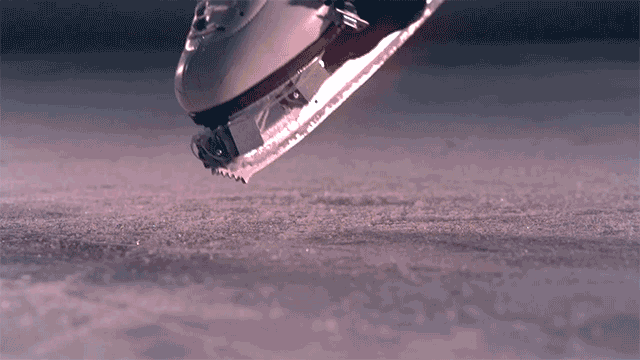
© 2025 Blaze Media LLC. All rights reserved.
New Device Shows How Strong Ankles Have to Be to Win Figure-Skating Gold
February 21, 2014
Some Olympic skaters may weigh less than 100 pounds, but when they impact the ice after jumps, they feel the pressure of an 800-pound gorilla.
Skaters and coaches know the pain well, but researchers at Brigham Young University rigged a special sensor so now the audience can get an accurate understanding of the beatings athletes take on the ice.
Previous attempts to measure these forces put skaters in a research lab jumping off a platform onto a sensor plate, but it never produced a truly accurate picture of what they were dealing with, according to Gizmodo.
But BYU researchers created the first skate-mounted sensor—which measures forces separately at the front, middle and back of the foot without affecting a skater's performance—that can accurately gather data on the actual ice performance.
 The BYU research team hopes to achieve a first with their new skate-mounted sensor , accurately measuring the forces skaters feel on the ice. (Image source: YouTube)
The BYU research team hopes to achieve a first with their new skate-mounted sensor , accurately measuring the forces skaters feel on the ice. (Image source: YouTube)
By comparison, when running, your legs only absorb roughly two to three times your own body weight. But factoring in the height a figure skater can reach during a jump and the speed with which they land and turn on the ice, the impacts are dramatically increased.
"Skaters do at least 50 jumps a day, every day that they're training, and they train at least five days a week if they're competitive skaters," Sara Ridge, BYU exercise science professor, said in the team's research video. "They have a lot of force that they're landing with, over and over again, and this contributes to overuse injuries."
The BYU team hopes to use the data to prevent future injuries for all skaters, Olympians or not.
"When figure skaters land, they can experience five to eight times their body weight," Ridge said. "And that happens within 50-125 milliseconds, which is not a lot of time for the body to absorb that magnitude of force ... it may be that we need to limit the number of jumps that developing skaters are doing to keep their joints safe."
See the BYU research video "Force of Flight" here:
(H/T: Gizmodo)
--
Follow Elizabeth Kreft (@elizabethakreft) on Twitter
Want to leave a tip?
We answer to you. Help keep our content free of advertisers and big tech censorship by leaving a tip today.
Want to join the conversation?
Already a subscriber?
more stories
Sign up for the Blaze newsletter
By signing up, you agree to our Privacy Policy and Terms of Use, and agree to receive content that may sometimes include advertisements. You may opt out at any time.
Related Content
© 2025 Blaze Media LLC. All rights reserved.
Get the stories that matter most delivered directly to your inbox.
By signing up, you agree to our Privacy Policy and Terms of Use, and agree to receive content that may sometimes include advertisements. You may opt out at any time.







